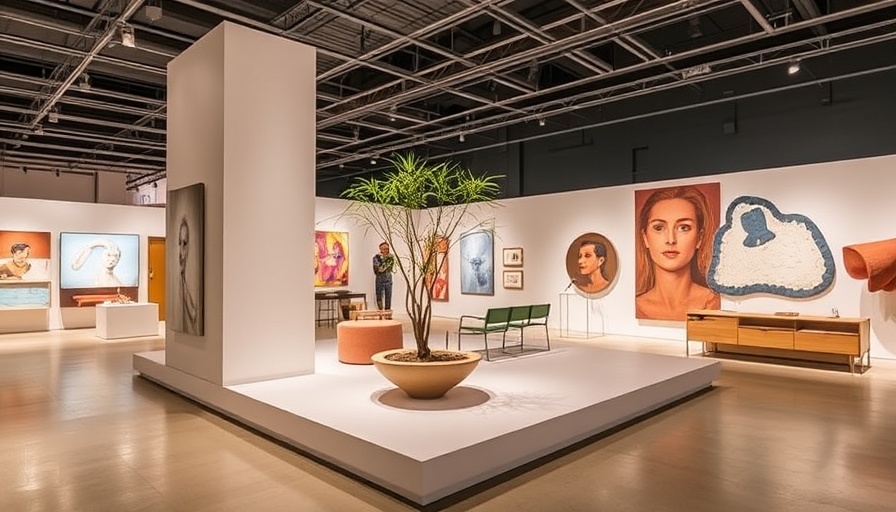
Exploring NYCxDesign 2025: A Haven for Remote Work Enthusiasts
As digital nomads continue to redefine the workspace, NYCxDesign 2025 serves as an exciting landscape for discovering how art, comfort, and efficiency can coexist in our working environments. With a thriving design culture and innovative exhibitions overflowing the streets of New York, this year's design festival promises to inspire individuals seeking ergonomic and aesthetically pleasing remote workspaces.
Why Design Matters for Remote Workers
For those who work from home or anywhere in the world, the workspace becomes crucial for productivity. A well-designed area not only enhances work efficiency but also contributes to physical and mental health. The pieces showcased during NYCxDesign exemplify how thoughtful design can transform typical workspaces into comfortable and inspiring environments.
Highlighting Key Exhibitions: Ergonomic Inspirations
Among the standout exhibitions, the Hug Chair launch by Kouros Maghsoudi stands out as a prime example. This collection focuses on the revival of 'provocative design,' which can be thought-provoking for digital nomads. Its metal-and-fiberglass composition is not just aesthetically pleasing but also emphasizes ergonomics, making it a perfect addition to a remote work setup.
Another significant exhibition, Chroma: A Vibrant Experience of Swiss Design, promises to showcase vibrant, tactile pieces by Swiss studios. This exhibition will demonstrate how bright and engaging designs can enhance mood and productivity, crucial for those spending extended hours in remote work environments.
Collective Reflections: The Forced Perspective Exhibit
Among the undercurrents of this year’s festival is the Forced Perspective show, featuring local emerging designers. Its theme of reflection amidst “distorted political and social views” resonates especially with remote workers grappling with solitude and the global landscape. The sculptural furniture and concept-driven designs in this exhibition will spark ideas on creating personal spaces that reflect individuality and current societal discourse.
An Emphasis on Multi-Designer Shows
This year, NYCxDesign adopts a more inclusive outlook with multi-designer shows. Locations across Manhattan showcase an array of styles, optimizing the diverse needs of remote workers. Spaces like the Jacob K Javits Convention Center host major trade fairs, while the fresh offerings of Shelter aim to provide accessible yet sophisticated solutions for personalizing workspaces.
Unique Benefits of Attending NYCxDesign
Attending NYCxDesign is not just about marveling at beautiful designs; it also offers immense practical benefits. By exploring various exhibitions, remote workers can discover innovative designs that cater to comfort, health, and productivity. Events like the Joaquim Tenreiro: Inventing a Modern Tropical Living exhibit provide an in-depth look at how tropical influences can create airy and welcoming environments, ideal for boosting creativity and concentration.
Making Decisions with Insightful Design
With more than 16 tailored exhibitions, participants can draw inspiration for their workspaces based on the ergonomic and aesthetic insights gained. Whether it's choosing a chair that supports the lower back or selecting colorful accessories that enhance energy, the experience is invaluable.
Join the Conversation: Connect at NYCxDesign
In conclusion, NYCxDesign 2025 offers incredible opportunities for digital nomads to explore how powerful design can transform their workspaces. Attending these events not only allows individuals to gather ideas for their personal and professional lives but also fosters a sense of community among remote workers. Make the most of this vibrant event and discover how design excellence can uplift your remote work experience. Don’t miss out—mark your calendars and take part in shaping the future of your workspace!
 Add Row
Add Row  Add
Add 




Write A Comment